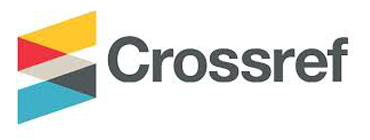ATTENDING UNIVERSITY COURSE AND ISLAMIC BOARDING SCHOOL: THE CASE OF PAI STUDENTS OF IAIN SALATIGA (Study of Motivation and Implications for Adversity Quotient)
Abstract
The purpose of this research is to find out the motivations of PAI (Islamic Education Department) students at IAIN Salatiga to choose to attend lecture and nyambi nyantri (attending Islamic boarding school course) and to reveal their implications for adversity quotient. This study implemented a phenomenological approach and data were obtained through interviews, observations, and documentation. The results of this study indicated that, the motivations of PAI students in IAIN Salatiga choose to nyantri nyambi lectures namely to fill their free time outside of lecture hours, to study religion more deeply, to continue their Islamic boarding school study, to consider the Islamic boarding school to be in line with the study program taken, to get a mandate from Kyai (religious authorities preferred by Javanese community) to study while mondok (living in Islamic boarding school), and their parents do not allow them to continue their study to college if they live in homestay. While the implications for the adversity quotient of PAI students of IAIN (State Islamic Institution) Salatiga are to have great aspirations, shown by the desire to graduate as soon as possible with a cum laude GPA, continuing their study to master degree, be able to read and master kitab kuning (the traditional Islamic manuscript); be able to face difficulties, demonstrated by being able to go through difficult times of adaptation, be able to overcome economic difficulties; having great self-confidence which is shown by interpreting difficulties as encouragement in achieving goals.
Full Text:
PDFReferences
Afrizal. 2017. Metode Penelitian Kualitatif: Sebuah Upaya Mendukung Penggunaan Penelitian Kualitatif dalam Berbagai Disiplin Ilmu. Depok: PT RajaGrafindo Persada.
Chaplin, J.P. 1971. Dictionary of Psychology. New York: Dell Publishing CO.
Colman, Andrew M. 2009. A Dictionary of Psychology, Third Edition. New York: Oxford University Press.
Dohrenwend, Bruce P. (ed). 1998. Adversity, Stress, and Psychopathology. New York: Oxford University Press.
Ermiza. (2017). Faktor-faktor yang Berhubungan dengan Motivasi Belajar Mahasiswa Semester VI di Program Studi DIII Kebidanan STIKes Fort De Kock Bukittinggi Tahun 2013. Jurnal Maternity and Neonatal, Vol. 2, No. 3, 184-191.
Fauziah, Nailul. (2014). Empati, Persahabatan, dan Kecerdasan Adversitas pada Mahasiswa yang Sedang Skripsi. Jurnal Psikologi Undip, Vol. 13, No. 1, April, 78-92.
Hasbiansyah, O. (2008). Pendekatan Fenomenologi: Pengantar Praktik Penelitian dalam Ilmu Sosial dan Komunikasi. Mediator, Vol. 9, No. 1, Juni, 163-180.
Haque, Mohammad Faizul, dkk. (2014). Motivational Theories-A Critical Analysis. ASA University Review, Vol. 8, Number 1, January-June, 61-68.
Indra, Hasbi. (2017). Salafiyah Curriculum at Islamic Boarding School in The Globalization Era. Tarbiya: Journal of Education in Muslim Society, Vol. 4, No. 1, 74-88.
Islamiyah, Djami’atul. 2013. Psikologi Agama: Beberapa Materi Pilihan. Salatiga: STAIN Salatiga Press.
Kementerian Agama RI. 2010. Al-Qur’an Tajwid dan Terjemah Dilengkapi Asbabun Nuzul dan Hadits Sahih. Tangerang: PPPA Darul Qur’an.
Khusna, Naila dkk. (2017). Hubungan antara Adversity Quotient dan Dukungan Keluarga dengan Kematangan Karir Remaja Yatim di SMA di Surakarta. Wacana: Jurnal Psikologi, Vol. 9, No. 1, 14-27.
Koeswara, E. 1989. Motivasi: Teori dan Penelitiannya. Bandung: Angkasa.
Koh, Caroline. (2012). Moral Development and Student Motivation in Moral Education: A Singapore Study. Australian Journal of Education, Vol. 56, No. 1, 83-101.
Munawaroh, Fathimah. (2018). Contribution of Moral Sufism Learning to Adversity Quotient. Attarbiyah: Journal of Islamic Culture and Education, Vol. 3, No. 1, 46-64.
Munawaroh, Fathimah. 2017. Kontribusi Pembelajaran Akhlak Tasawuf Terhadap Adversity Quotient Mahasiswa IAIN Salatiga Tahun 2017. Tesis. IAIN Salatiga.
Ofm, Nico Syukur Dister. 1988. Pengalaman dan Motivasi Beragama: Pengantar Psikologi Agama Edisi Kedua. Yogyakarta: Penerbit Kanisius.
Petri, Herbert dan John M. Govern. 2013. Motivation: Theory, Research, and Application, Sixth Edition, International Edition. USA: Wadsworth Cengange Learning.
Shalihah, Annida Nur, dkk. (2018). The Relationship Between Adversity Quotient and Career Adaptability of Internship Nursing Students. JNC, Vol. 1, No. 1, February, 24-33.
Stoltz, Paul G. 2005. Adversity Quotient: Mengubah Hambatan Menjadi Peluang. Alih Bahasa: T. Hermaya. Jakarta: Grasindo.
Sugiyono. 2016. Memahami Penelitian Kualtitatif. Bandung: CV Alvabeta.
Takdir, Mohammad. 2018. Modernisasi Kurikulum Pesantren: Konsep dan Metode Antroposentris. Yogyakarta: IRCiSoD.
Sudarman. (2012). Adversity Quotient: Pembangkit Motivasi Siswa dalam Belajar Matematika. Kreatif, Vol. 15, No. 1, 36-40
DOI: http://dx.doi.org/10.30829/tar.v26i2.476
Refbacks
- There are currently no refbacks.

Jurnal Tarbiyah by UIN Sumatera Utara Medan is licensed under a Creative Commons Attribution-NonCommercial-ShareAlike 4.0 International License.
Based on a work at http://jurnaltarbiyah.uinsu.ac.id/index.php/tarbiyah.
Permissions beyond the scope of this license may be available at http://jurnaltarbiyah.uinsu.ac.id/index.php/tarbiyah/about/submissions#copyrightNotice.
















